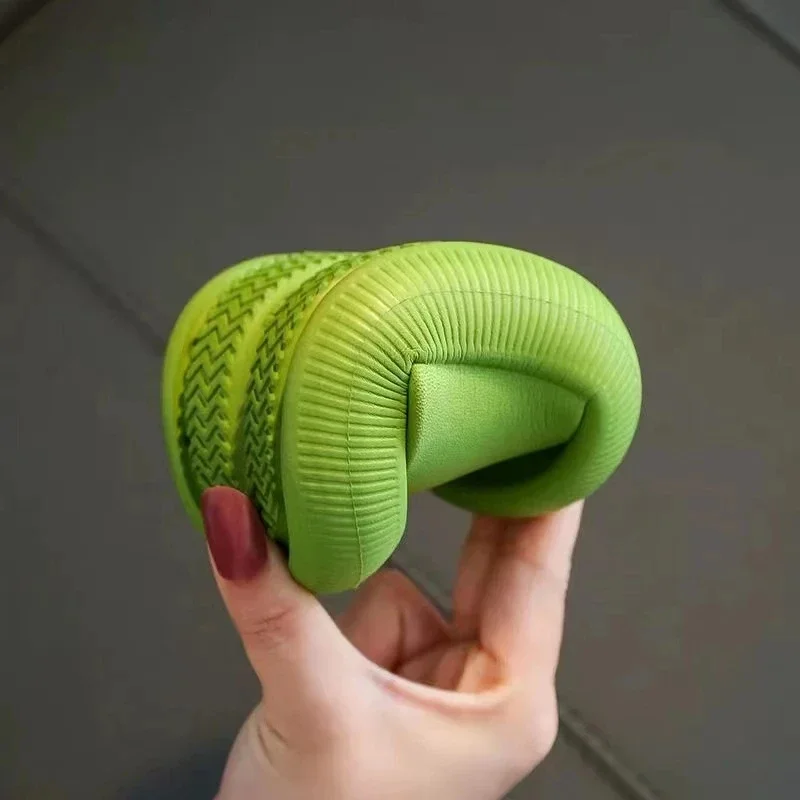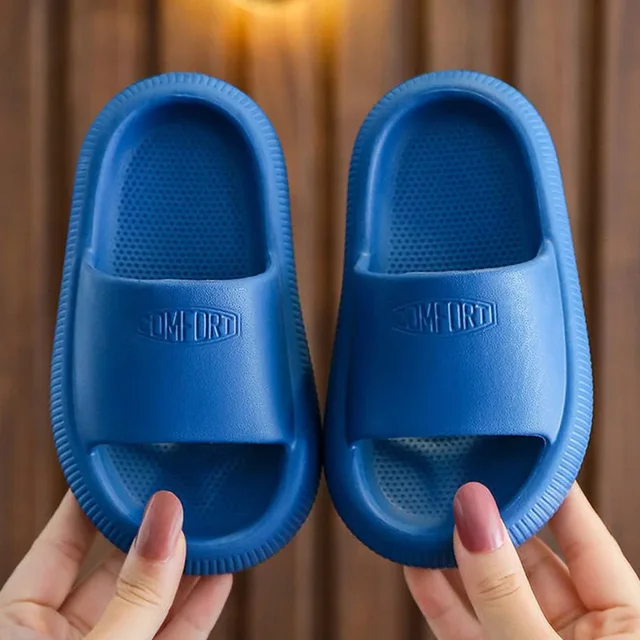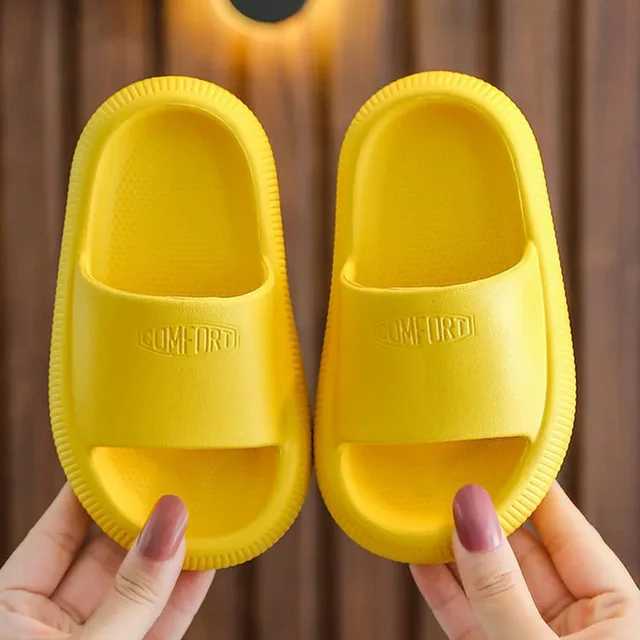When it comes to choosing the perfect pair of slippers for kids, many factors come into play. From comfort and safety to style and durability, finding the right slippers involves more than just picking a cute design. This guide will explore all the essential aspects of kid slippers to help you make an informed choice.

The Importance of Comfort in Kid Slippers
Why Comfort Matters
Comfort is the most crucial factor when selecting slippers for children. Kids spend a significant amount of time in their slippers, whether they are lounging around the house, playing, or even running errands with their parents. Slippers that are uncomfortable can lead to foot pain, blisters, or other issues. Therefore, it is essential to choose slippers that provide ample cushioning and support.
Key Features for Comfort
When evaluating comfort, look for slippers with soft, cushioned insoles. Memory foam is a popular choice because it molds to the shape of the foot, providing a custom fit. The upper material should be soft and breathable to prevent overheating and sweating. Additionally, slippers with adjustable straps or stretchy materials can accommodate different foot shapes and sizes, ensuring a snug but comfortable fit.
Another important aspect is the flexibility of the sole. Slippers with a flexible sole allow for natural foot movement and help prevent stiffness. This flexibility is particularly important for younger children whose feet are still developing. Also, ensure that the slippers have enough arch support to maintain proper foot alignment.
Safety Features in Kid Slippers
Slip-Resistant Soles
Safety is another critical consideration when choosing slippers for kids. Slipper soles should have a non-slip or anti-skid feature to prevent slipping on smooth surfaces. Many slippers are equipped with rubber or textured soles that provide better traction, reducing the risk of falls. This is especially important in households with hardwood or tile floors.
Proper Fit and Support
A well-fitting slipper helps prevent trips and falls. Ill-fitting slippers can cause trips or even lead to injuries if they are too loose or too tight. Ensure that the slippers fit well and that there is enough room for the toes to move freely. Some slippers come with adjustable closures or elastic bands to help achieve a better fit.
Support is also a safety feature. Slippers with good arch support and cushioned heels can help maintain proper foot alignment, which is essential for preventing strain and injuries. This support is especially important for children who are still developing their walking skills.
Choosing the Right Style for Your Child
Factors to Consider
The style of the slipper should be both practical and appealing to your child. Kids often have strong preferences when it comes to colors and designs, so involving them in the decision-making process can make them more excited about wearing their slippers. Consider the following factors when choosing a style:
- Age Appropriateness: Younger children might prefer slippers with fun designs, such as animals or favorite characters. Older kids might lean towards more classic or trendy designs.
- Ease of Use: Slippers should be easy for children to put on and take off by themselves. Look for styles with adjustable straps or slip-on designs.
- Seasonal Considerations: Depending on the weather, you might choose between warm, fuzzy slippers for colder months or lightweight, breathable styles for warmer weather.
Material Choices
The material of the slippers contributes to both comfort and style. Fleece, wool, and plush fabrics are ideal for keeping feet warm during winter. For summer, opt for materials like cotton or mesh that allow for ventilation and reduce sweating. Remember that some materials might be more durable than others, so consider how frequently the slippers will be worn.

Durability and Maintenance
Longevity of Kid Slippers
Durability is another important factor. Kids can be rough on their belongings, so choosing slippers made from high-quality materials that can withstand regular wear and tear is crucial. Look for reinforced stitching and sturdy soles to ensure that the slippers last longer.
How to Maintain Kid Slippers
Proper maintenance can extend the life of your child’s slippers. Check the care instructions provided by the manufacturer. Some slippers may be machine washable, while others may need to be cleaned by hand. Regularly inspect the slippers for signs of wear, such as loose seams or worn-out soles, and address any issues promptly to prevent further damage.
Storing Slippers
Proper storage also helps in maintaining the slippers. Keep them in a dry, cool place to prevent mold or mildew growth. Avoid leaving them in damp areas, and ensure they are fully dry before storing them. Using a shoe rack or dedicated storage space can help keep them in good condition.
The Benefits of Investing in Quality Slippers
Long-Term Benefits
Investing in high-quality slippers can have long-term benefits for your child’s foot health and overall comfort. Quality slippers offer better support and durability, reducing the need for frequent replacements. They can also prevent foot problems such as flat feet or poor posture that may arise from wearing poorly made footwear.
Economic and Environmental Impact
Choosing durable slippers can also be more economical in the long run. While they might come with a higher initial price tag, their longevity can save money over time. Additionally, opting for well-made products contributes to environmental sustainability by reducing waste and the need for replacements.
Involving Your Child in the Selection Process
Preferences and Comfort
Involving your child in choosing their slippers can make them more enthusiastic about wearing them. Let them pick their favorite colors or designs, and ensure the slippers feel comfortable on their feet. This can help prevent issues with fit or style later on.
Testing Fit and Function
Have your child try on different pairs to check for the right fit. Ensure they can walk comfortably and that the slippers don’t slip off or feel too tight. Allowing them to test the slipper’s flexibility and support can help find the best option for their needs.
Fun and Functional
Combine fun with functionality by selecting slippers with features your child will love, such as their favorite characters or interactive elements. This can make wearing slippers a more enjoyable experience and encourage them to use them regularly.

How to Choose the Right Size for Kid Slippers
Measuring Feet Accurately
To ensure the perfect fit, measure your child’s feet regularly as they grow. Use a ruler or a foot-measuring device to check the length and width of their feet. Many stores provide sizing charts to help match these measurements with the correct slipper size.
Account for Growth
Kids’ feet grow quickly, so it’s often a good idea to choose slippers with a bit of extra room. Opt for slippers that offer a snug fit but allow for growth without being too loose. Adjustable straps or elastic bands can help accommodate slight changes in foot size.
Check Manufacturer Sizing Guides
Different brands may have slightly different sizing. Always check the manufacturer’s sizing guide for accurate measurements. Reading reviews can also provide insights into how the slippers fit compared to other brands.
Conclusion
Selecting the perfect pair of kid slippers involves considering multiple factors including comfort, safety, style, durability, and maintenance. By focusing on these aspects, you can ensure that your child enjoys a comfortable and supportive slipper that meets their needs. Remember that involving your child in the selection process can make the experience more enjoyable and ensure they are happy with their new footwear. Investing in quality slippers not only benefits your child’s foot health but also offers long-term value and sustainability.
